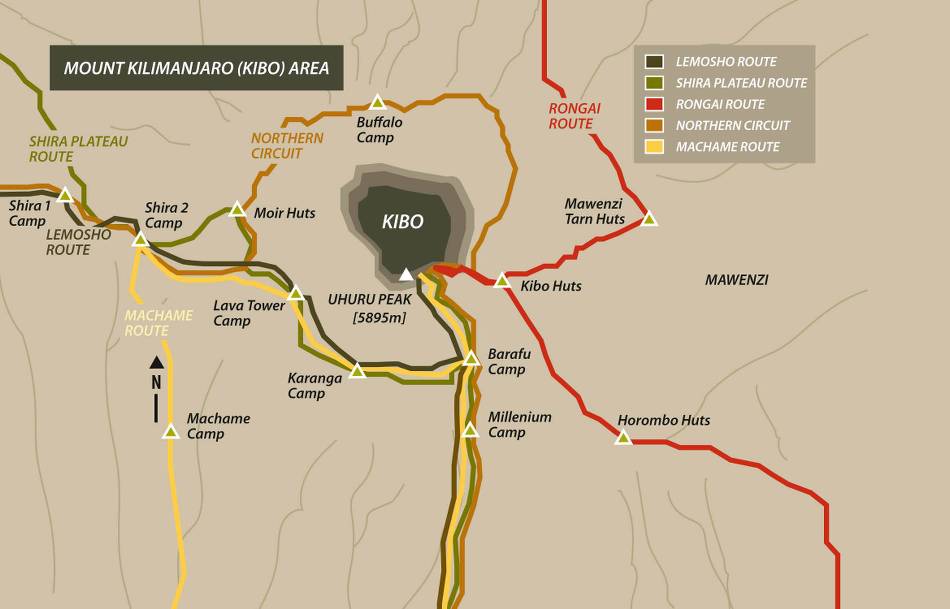Machame Route
Known as the "Whiskey" route, Machame is one of the most popular trails on Kilimanjaro due to its direct approach to the summit and varied landscapes. It's perfect for those who want a relatively shorter climb while still enjoying the beauty of Kilimanjaro’s diverse terrains.
- Duration: 6 days & 7 days
- Difficulty: Challenging
- Highlights: Spectacular scenery, forest walks, and a thrilling summit push.
Northern Circuit Route
The Northern Circuit Route is the longest and most remote route on Kilimanjaro, taking 9 days to complete. It offers unparalleled 360-degree views and a high success rate due to its gradual acclimatization.
- Duration: 8 days & 9 days
- Difficulty: Moderate, with ample time to acclimatize and fewer steep ascents.
- Highlights: Experience solitude and 360-degree panoramas. Walk through pristine landscapes and enjoy less crowded trails.
Lemosho Route
The Lemosho Route is a favorite for its varied terrain and gradual ascent profile, making it ideal for acclimatization. This scenic trail begins in the lush forests of the western slopes.
- Duration:7 days – 8 days.
- Difficulty: Moderate, with an excellent acclimatization profile.
- Highlights: Walk through the Shira Plateau and enjoy views of Mount Meru and Uhuru Peak. A chance to witness diverse ecosystems in one trek.
Rongai Route
Approaching Kilimanjaro from the north, near the Kenyan border, the Rongai Route is quieter and offers a unique wilderness experience, with gradual ascents and fewer trekkers.
- Duration:6 days –7 days.
- Difficulty: Moderate, with a gentler ascent.
- Highlights: Remote wilderness, excellent views of the Kenyan side of Kilimanjaro, and a peaceful trekking experience.
Umbwe Route
For climbers seeking a thrilling adventure, the Umbwe Route is the steepest and most direct path to Kilimanjaro’s summit. Its demanding nature requires excellent physical fitness.er, the Rongai Route is quieter and offers a unique wilderness experience, with gradual ascents and fewer trekkers.
- Duration:6 days – 7 days.
- Difficulty: High, with steep and challenging ascents.
- Highlights: Dramatic ridges, dense rainforests, and a shorter, intense journey to Uhuru Peak.
Marangu Route ("Coca-Cola Route")
The Marangu Route is the only trail with hut accommodations, making it ideal for those who prefer a more comfortable experience. It is one of the easier routes but requires proper acclimatization.
- Duration:5 days – 6 days.
- Difficulty: Moderate, with steady inclines and less variation in scenery.
- Highlights: Stay in cozy mountain huts and enjoy a shorter trek with gradual ascents. This route is great for beginners.






